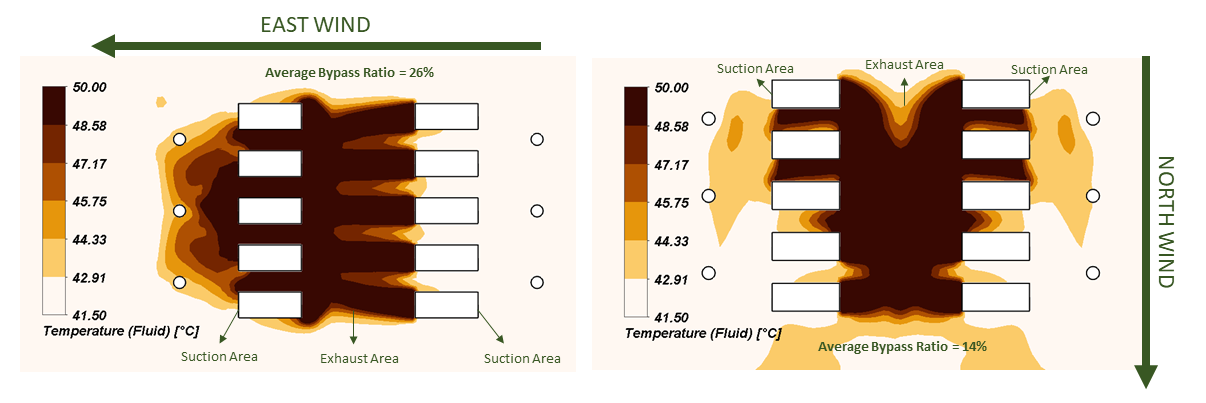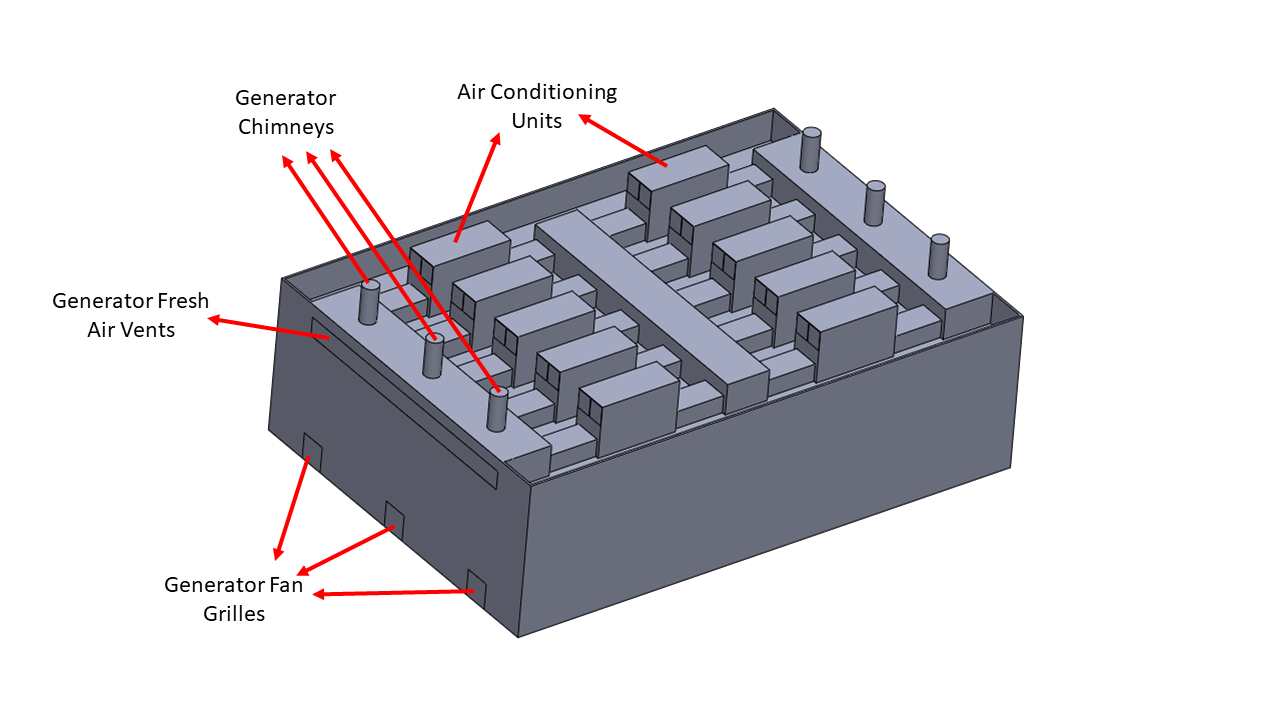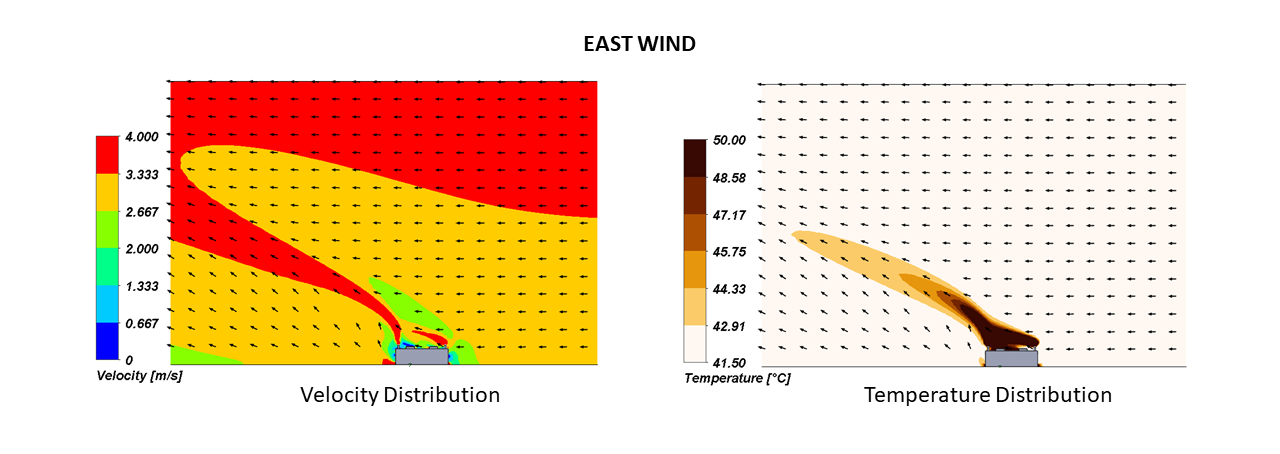
Wind Direction and Bypass Ratio in Data Center Cooling Systems
In data centers, the heat generated by hardware and servers during operation must be controlled through cooling systems. The placement of cooling units for this purpose can be on the roof in large data centers. However, the bypass ratio of this method is important in terms of efficiency and performance. Therefore, CFD analyses can be used to examine and optimize the bypass ratio.
You can access our blog post where we examine the bypass ratio at the following link:
CFD analysis (Computational Fluid Dynamics Analysis) is a method of modeling the movement and behavior of fluids through computer simulations. This method uses mathematical equations to analyze variables such as fluid velocity, temperature, pressure, density, and other properties. CFD analysis helps to better understand and optimize the behavior of fluids, and is therefore widely used in many industries, particularly in aviation, construction, and pharmaceutical development.
In this article, we will examine the changes in the surface suction temperatures and bypass rates of a data center’s cooling units based on factors such as wind direction, using CFD analysis. With the results obtained, we will try to identify the highest bypass rates for further detailed analysis.
Let’s construct a sample model and carry out our scenarios based on it:

A data center’s roof includes 10 units:
- Air Conditioning Units (with intake and exhaust vents)
- Generator Chimneys for exhaust gases from the generator rooms
- Generator Fans
- Generator fresh air intake vents.
The points of focus for design and analysis are the temperatures and bypass ratios in the intake vents of the air conditioning units.

Regardless of the scenarios, boundary condition values due to the operation of the data center should be established. These include defining the flow rates and temperatures at which the devices and ventilation elements will intake and exhaust and specifying concentrations for tracking exhaust gases.

8 Different Wind Direction Scenarios
Let’s define the boundary conditions for the external environmental conditions to be applied on the example system:
- 41.5 °C atmospheric temperature
- 8 Wind Profiles Applied from Different Directions





The distributions of wind speed, temperature, and surface temperatures of the air conditioning units for the eastward blowing winds are shown in Figures 5,6 and 7. Based on the results obtained from the CFD analysis, the average surface intake temperatures of the air conditioning units were calculated for each wind direction.



Bypass rates are relatively low for winds coming from the North and South, while they are higher for winds coming from the East and West. As shown in Figure 9, East-West winds push the hot air exhausted from the devices towards the suction surfaces, resulting in increased bypass rates. North-South winds, on the other hand, collect the hot air exhausted from the devices in the central region. Bypass rate is directly related to the direction of the wind. The increase and decrease of the bypass rate with the wind direction is a design criterion, and the dominant winds in the region should be considered during the design phase.
Next week, we will also vary the wind speeds along with their directions and examine the effects of wind speed on design differences and their impact on the bypass ratio.



